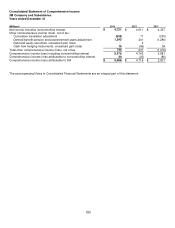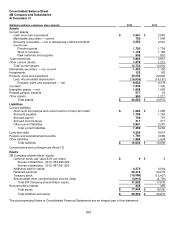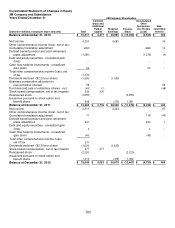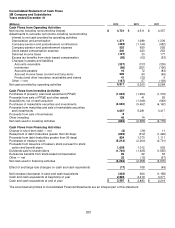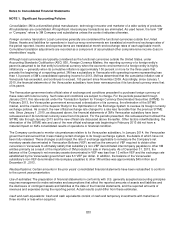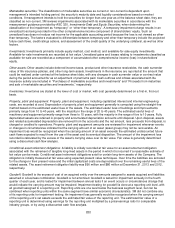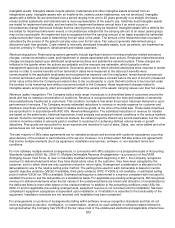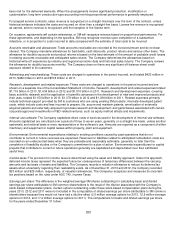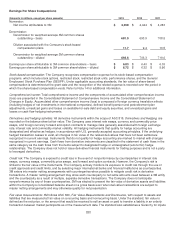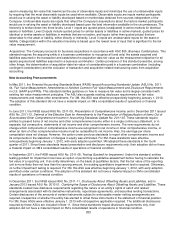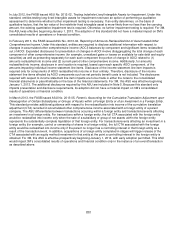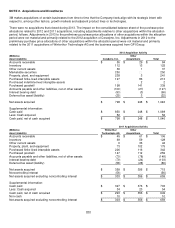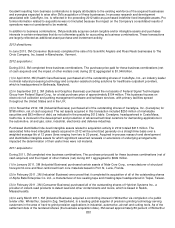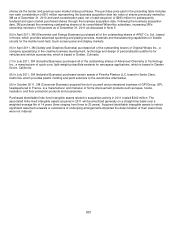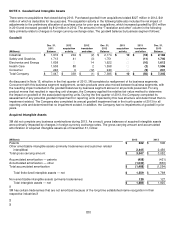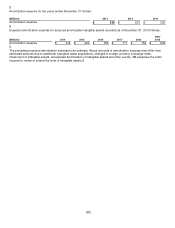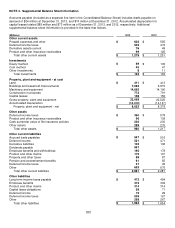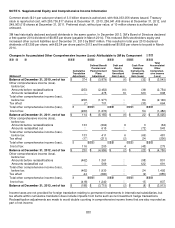3M 2013 Annual Report Download - page 61
Download and view the complete annual report
Please find page 61 of the 2013 3M annual report below. You can navigate through the pages in the report by either clicking on the pages listed below, or by using the keyword search tool below to find specific information within the annual report.55
been met for the delivered elements. When the arrangements involve significant production, modification or
customization, long-term construction-type accounting involving proportional performance is generally employed.
For prepaid service contracts, sales revenue is recognized on a straight-line basis over the term of the contract, unless
historical evidence indicates the costs are incurred on other than a straight-line basis. License fee revenue is recognized
as earned, and no revenue is recognized until the inception of the license term.
On occasion, agreements will contain milestones, or 3M will recognize revenue based on proportional performance. For
these agreements, and depending on the specifics, 3M may recognize revenue upon completion of a substantive
milestone, or in proportion to costs incurred to date compared with the estimate of total costs to be incurred.
Accounts receivable and allowances: Trade accounts receivable are recorded at the invoiced amount and do not bear
interest. The Company maintains allowances for bad debts, cash discounts, product returns and various other items. The
allowance for doubtful accounts and product returns is based on the best estimate of the amount of probable credit losses
in existing accounts receivable and anticipated sales returns. The Company determines the allowances based on
historical write-off experience by industry and regional economic data and historical sales returns. The Company reviews
the allowance for doubtful accounts monthly. The Company does not have any significant off-balance-sheet credit
exposure related to its customers.
Advertising and merchandising: These costs are charged to operations in the period incurred, and totaled $423 million in
2013, $482 million in 2012 and $518 million in 2011.
Research, development and related expenses: These costs are charged to operations in the period incurred and are
shown on a separate line of the Consolidated Statement of Income. Research, development and related expenses totaled
$1.715 billion in 2013, $1.634 billion in 2012 and $1.570 billion in 2011. Research and development expenses, covering
basic scientific research and the application of scientific advances in the development of new and improved products and
their uses, totaled $1.150 billion in 2013, $1.079 billion in 2012 and $1.036 billion in 2011. Related expenses primarily
include technical support provided by 3M to customers who are using existing 3M products; internally developed patent
costs, which include costs and fees incurred to prepare, file, secure and maintain patents; amortization of externally
acquired patents and externally acquired in-process research and development; and gains/losses associated with certain
corporate approved investments in R&D-related ventures, such as equity method effects and impairments.
Internal-use software: The Company capitalizes direct costs of services used in the development of internal-use software.
Amounts capitalized are amortized over a period of three to seven years, generally on a straight-line basis, unless another
systematic and rational basis is more representative of the software’s use. Amounts are reported as a component of either
machinery and equipment or capital leases within property, plant and equipment.
Environmental: Environmental expenditures relating to existing conditions caused by past operations that do not
contribute to current or future revenues are expensed. Reserves for liabilities related to anticipated remediation costs are
recorded on an undiscounted basis when they are probable and reasonably estimable, generally no later than the
completion of feasibility studies or the Company’s commitment to a plan of action. Environmental expenditures for capital
projects that contribute to current or future operations generally are capitalized and depreciated over their estimated
useful lives.
Income taxes: The provision for income taxes is determined using the asset and liability approach. Under this approach,
deferred income taxes represent the expected future tax consequences of temporary differences between the carrying
amounts and tax basis of assets and liabilities. The Company records a valuation allowance to reduce its deferred tax
assets when uncertainty regarding their realizability exists. As of December 31, 2013 and 2012, the Company recorded
$23 million and $29 million, respectively, of valuation allowances. The Company recognizes and measures its uncertain
tax positions based on the rules under ASC 740, Income Taxes.
Earnings per share: The difference in the weighted average 3M shares outstanding for calculating basic and diluted
earnings per share attributable to 3M common shareholders is the result of the dilution associated with the Company’s
stock-based compensation plans. Certain options outstanding under these stock-based compensation plans during the
years 2013, 2012 and 2011 were not included in the computation of diluted earnings per share attributable to 3M common
shareholders because they would not have had a dilutive effect (2.0 million average options for 2013, 12.6 million average
options for 2012, and 17.4 million average options for 2011). The computations for basic and diluted earnings per share
for the years ended December 31 follow:




